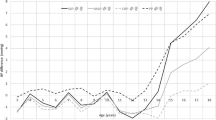Abstract
Background
Although the bioactive peptides associated with the apelinergic system are known to be associated with heart failure and ischemic heart disease, there are no data on their association with acromegaly.
Aim
We aimed to investigate the change in serum Elabela levels, a novel peptide of the apelinergic system, in patients with acromegaly.
Methods
Our study included 30 treatment naive patients who were recently diagnosed with acromegaly, and 50 age-and-sex-matched healthy controls. In addition to routine history, physical examination and laboratory examinations, serum Elabela level was measured. Participants were divided into two groups as individuals with and without acromegaly and compared to each other.
Results
Diastolic blood pressure (DBP) and systolic blood pressure (SBP) were found to be higher in patients with acromegaly. Serum glucose, Hs-CRP, NT-proBNP, insulin-like growth factor-1, growth hormone and serum Elabela levels were higher in patients with acromegaly (p < 0.05 for each). Left ventricular ejection fraction (LV-EF) was found to be lower in patients with acromegaly than the patients in healthy control group (p < 0.05). In multivariate analysis; age, systolic blood pressure, NT-proBNP, Insulin-like growth factor 1 and growth hormone levels were found to be very closely and positively related to serum Elabela level (p < 0.05 for each).
Conclusions
Serum Elabela level can be used as an early and objective indicator of early cardiovascular involvement in patients with acromegaly. Further research is needed to clarify the role of serum Elabela levels on cardiovascular system in acromegaly patients.



Similar content being viewed by others
References
Katznelson L, Laws ER Jr, Melmed S et al (2014) Endocrine Society Acromegaly: an endocrine society clinical practice guideline. J Clin Endocrinol Metab 99(11):3933–3951. https://doi.org/10.1210/jc.2014-2700
Sumbul HE, Koc AS (2019) Hypertension is common in patients with newly diagnosed acromegaly and is ındependently associated with renal resistive ındex. High Blood Press Cardiovasc Prev 26(1):69–75. https://doi.org/10.1007/s40292-018-0293-9
Guo X, Fu H, Pang H, **ng B (2018) Risk of left ventricular hypertrophy and diastolic and systolic dysfunction in acromegaly: a meta-analysis. J Clin Neurosci 48:28–33. https://doi.org/10.1016/j.jocn.2017.10.067
Bankir M, Sumbul HE, Koc AS et al (2019) Elastography detected solid organ stiffness increased in patients with acromegaly. Medicine (Baltimore) 98:e14212
O’Dowd BF, Heiber M, Chan A et al (1993) A human gene that shows identity with the gene encoding the angiotensin receptor is located on chromosome 11. Gene 136:355–360
Perjés Á, Kilpiö T, Ulvila J et al (2016) Characterization of apela, a novel endogenous ligand of apelin receptor, in the adult heart. Basic Res Cardiol 111:2. https://doi.org/10.1007/s00395-015-0521-6
Simpkin JC, Yellon DM, Davidson SM et al (2007) Apelin-13 and apelin-36 exhibit direct cardioprotective activity against ischemia-reperfusion injury. Basic Res Cardiol 102:518–528
Dai T, Ramirez-Correa G, Gao WD (2006) Apelin increases contractility in failing cardiac muscle. Eur J Pharmacol 553:222–228
Chng SC, Ho L, Tian J, Reversade B (2013) ELABELA: a hormone essential for heart development signals via the apelin receptor. Dev Cell 27:672–680. https://doi.org/10.1016/j.devcel.2013.11.002
Zhang Y, Wang Y, Lou Y et al (2018) Elabela, a newly discovered APJ ligand: similarities and differences with Apelin. Peptides 109:23–32. https://doi.org/10.1016/j.peptides.2018.09.006
Schiller NB, Shah PM, Crawford M et al (1989) Recommendations for quantitation of the left ventricle by two-dimensional echocardiography. American Society of Echocardiography Committee on Standards, Subcommittee on Quantitation of Two-Dimensional Echocardiograms. J Am Soc Echocardiogr 2:358–367
Yang P, Maguire JJ, Davenport AP (2015) Apelin, Elabela/Toddler, and biased agonists as novel therapeutic agents in the cardiovascular system. Trends Pharmacol Sci 36:560–567. https://doi.org/10.1016/j.tips.2015.06.002
Nascimento GC, de Oliveira MT, Carvalho VC et al (2013) Acromegalic cardiomyopathy in an extensively admixed population: is there a role for GH/IGF-I axis? Clin Endocrinol (Oxf) 78(1):94–101. https://doi.org/10.1111/j.1365-2265.2012.04472.x
Author information
Authors and Affiliations
Contributions
Dr. Sumbul, Dr. Koc, Dr. Gulumsek, Dr. Ay and Dr. Avci Seyda: conceptualization, methodology, investigation, formal analysis, visualization, and writing – original draft. Dr. Sumbul, Dr. Gulumsek, Dr. Okyay and Dr. Sahin: conceptualization, methodology, resources, formal analysis, and writing – review and editing. Dr. Sumbul, Dr. Avci A, and Mr. Gold: conceptualization, methodology, and writing – review and editing. All authors read and approved the final version of the manuscript.
Corresponding author
Ethics declarations
Ethics approval and consent to participate
The study was performed according to the recommendations set by the Declaration of Helsinki on Medical Research involving Human Subjects. The ethics committee of Cukurova University, Faculty of Medicine approved the study. Informed consent was obtained from all individual participants included in the study.
Conflict of interest
The authors declare no competing interests.
Additional information
Publisher's Note
Springer Nature remains neutral with regard to jurisdictional claims in published maps and institutional affiliations.
Rights and permissions
About this article
Cite this article
Sumbul, H.E., Gulumsek, E., Avci, B.S. et al. Serum Elabela level is significantly increased in patients with acromegaly. Ir J Med Sci 192, 665–670 (2023). https://doi.org/10.1007/s11845-022-03042-6
Received:
Accepted:
Published:
Issue Date:
DOI: https://doi.org/10.1007/s11845-022-03042-6




